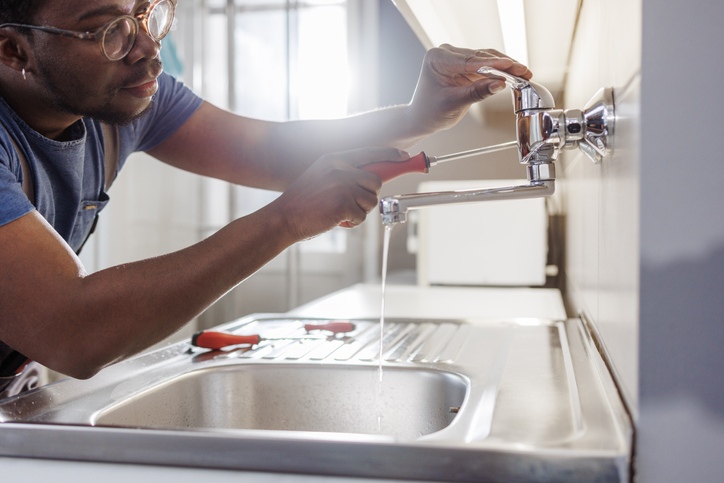Faucets are one of the most frequently used fixtures in any home, yet they’re often taken for granted—until they start leaking or lose water pressure. When problems arise, a professional faucet repair service offers a reliable fix. However, what many homeowners don’t realize is that post-repair care plays a vital role in extending the lifespan of their newly serviced faucet. Just like a car needs maintenance after a part replacement, faucets require proper handling, cleaning, and monitoring to continue functioning at their best. Without these efforts, the same problems could return sooner than expected, leading to unnecessary costs and headaches. The good news? With simple, consistent habits, you can prevent future damage and ensure your faucet serves you well for many years.
Use the Faucet Gently to Prevent Wear
1. Understand the Root Cause of the Initial Damage
One of the best ways to prevent repeat repairs is to understand what caused the initial problem. Was the damage due to high water pressure, worn-out parts, mineral buildup, or corrosion? Perhaps improper use or neglect played a role. During a professional repair, your plumber often identifies and addresses the root cause. Don’t hesitate to ask questions about what went wrong. If the problem was due to hard water, for example, investing in a water softener could dramatically reduce future wear and tear. Knowledge is your best tool—when you understand the weaknesses in your system, you can take specific actions to protect it going forward.
2. Stick to a Regular Cleaning Routine to Prevent Buildup
Many faucet problems arise from neglect. Over time, mineral deposits, soap scum, and grime can collect around the spout, handles, and aerator. These buildups not only affect water flow but can damage internal components. A simple, weekly cleaning routine can prevent this. Use a soft cloth and a non-abrasive cleaner to wipe down all exterior surfaces. Pay close attention to areas where water tends to pool. If you notice white or green mineral buildup, especially around the aerator, remove it and soak it in vinegar to break down deposits. For stubborn stains, a soft toothbrush can help without scratching the finish. Avoid harsh chemicals or steel wool, which can corrode metal or damage protective coatings.
3. Use the Faucet Gently and Avoid Over-Tightening
Forceful handling is one of the fastest ways to damage a faucet, even after it’s been professionally repaired. Many people habitually yank handles or over-tighten them to ensure the water stops completely. Unfortunately, this extra pressure wears down seals, cartridges, and internal washers. Over time, it can cause leaks, stiffness, and early component failure. The same caution applies to single-lever models—handle them with care. Make it a household rule to use gentle pressure when operating any faucet. Teach children to be careful as well, since their instinct may be to force things open or closed. Respecting the mechanics of the faucet will help preserve its integrity long after the initial repair.
4. Monitor for Leaks and Address Small Issues Early
Even after a successful repair, new problems can slowly develop if they’re not caught early. One of the smartest things you can do is routinely check your faucet for signs of trouble. Is water pooling at the base? Do you hear a faint dripping sound even when it’s off? Is there water under the sink? These seemingly small symptoms can be red flags for future issues. By catching leaks or drips early, you can often fix the problem before it requires another full repair. In some cases, all that’s needed is a slight adjustment or tightening. Neglecting these signs can lead to damage that affects more than just the faucet—it could involve your cabinetry or water bill, too.
5. Schedule Preventive Maintenance and System Checkups
Just as annual checkups help keep you healthy, occasional maintenance visits can keep your plumbing system in peak condition. While faucets may seem like minor components, they are directly linked to your water lines and pressure systems. Scheduling preventive maintenance once or twice a year allows a plumber to inspect not just your faucets but the surrounding plumbing. They can detect leaks inside the wall, warn you about aging parts, and recommend updates if needed. This kind of preventive care is especially useful in areas with older plumbing infrastructure or high mineral content in the water. A little attention now can prevent major headaches later. It’s a proactive approach that extends the life of your faucet and protects your home’s plumbing investment.
A faucet repair is only as good as the care that follows it. If you’ve taken the time and money to invest in professional plumbing service, it’s well worth the effort to maintain the results. Start by understanding what caused the issue in the first place so you can avoid similar mistakes. Make routine cleaning a habit and treat your faucet gently to preserve its moving parts. Be vigilant about small signs of trouble and act quickly when something seems off. And don’t underestimate the value of routine checkups, even for something as common as a faucet. With thoughtful upkeep, your faucet can remain efficient and problem-free for years, saving you both money and frustration in the long run.
Conclusion
Extend the life of your fixtures with expert faucet repair from Drain Flo Plumbing. Call us at (813) 391-1500 today for reliable service and lasting solutions that keep your plumbing flowing strong!
📌 Your Local Comfort Experts — Now Serving You as Drain Flo Plumbing with the Same Fast, Reliable Plumbing Solutions You Trust.
Don’t Miss These Reads
- Leaky Faucet Repair: Saving Water and Preventing Costly Damage
- Faucets Repair for Older Homes: Navigating Vintage Fixtures
- Mineral Buildup and Faucets Repair: Removing Lime and Scale



